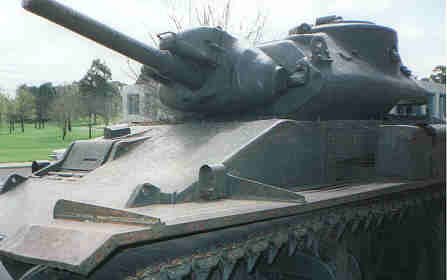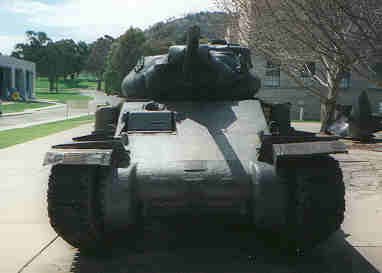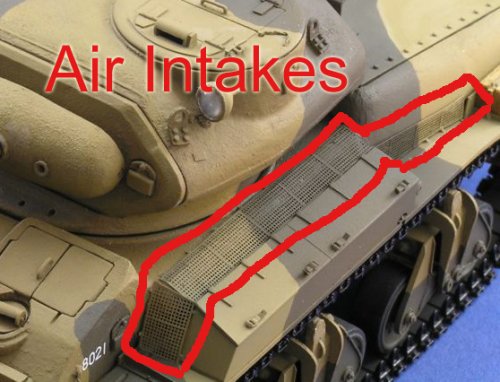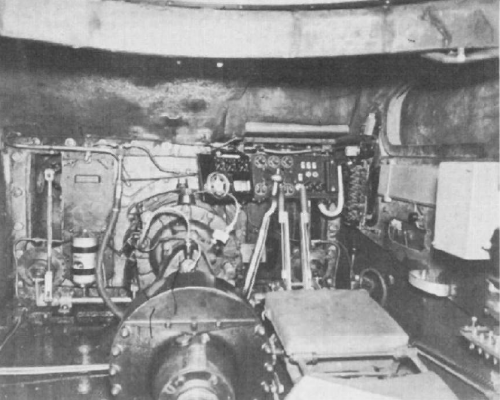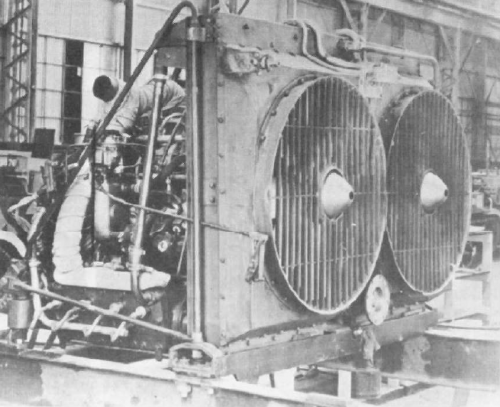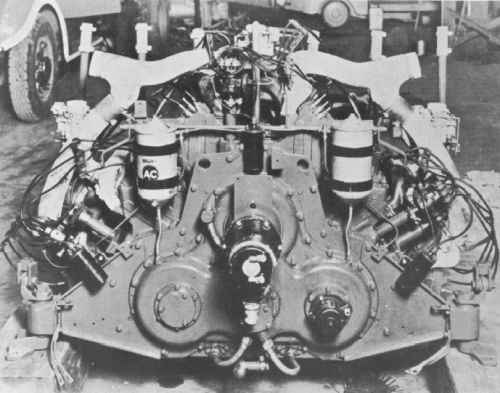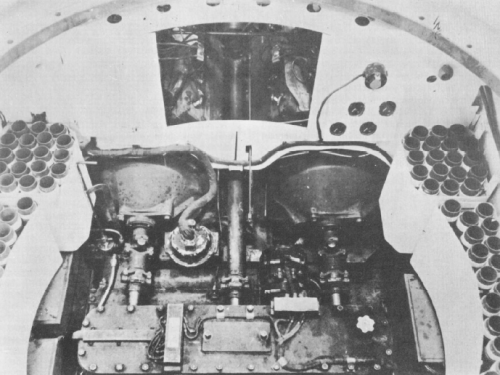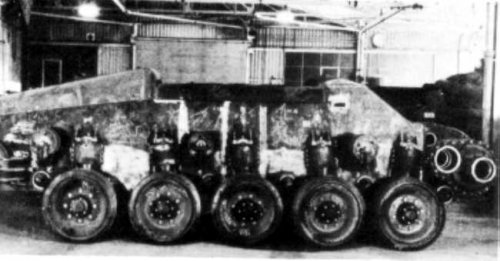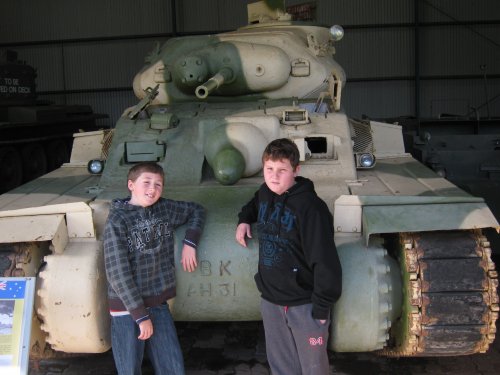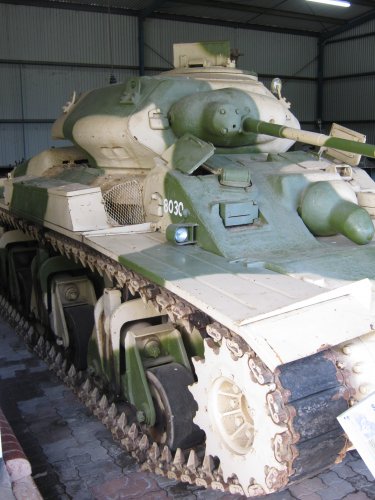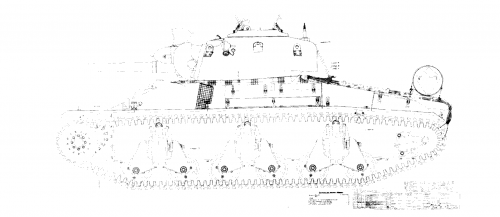Abraham Gubler said:
Kadija_Man said:
The problem for Sentinel was that it was launched at a time when the only physical enemy were the Germans in North Africa. Because of the rapid evolution of the AFVs in that conflict, it was always, like the other Allied tanks always going to be playing catch-up.
So that’s a problem facing every weapon system ever developed, everwhere.
True but as Australia was operating invariably on second if not more often third-hand information about technical matters in the North African desert, it would have been worse. We were at the end of the intelligence food-chain, with reports arriving months, often years after they had been digested in London or Washington. Nor, unfortunately was our military bureaucracy noted for its speedy or necessarily wise decision making.
Kadija_Man said:
While it had the potential to do so, the small numbers which were going to be produced were always going to be uneconomic.
Sentinel was planned for mass production through two new plants (one built in Sydney, one planned in Melbourne) using mass production items (motors, guns, etc.). Far from being a small production run of uneconomic vehicles.
Total numbers would still have been small. Our demand for tanks was small as we did not have a disproportionate number of armoured units and formations which required them. Therefore, unit cost would have been higher than a comparable vehicle imported from the US or even the UK, even taking into account transport costs.
Kadija_Man said:
Their costs would be disproportionately high and the costs of maintaining them so far from home would also be hight because of the lack of commonality with the other Allied AFVs which would have predominated in that theatre. The UK was never going to adopt it, both because of it's source and because it was cheaper and easier to source already built AFVs, like most other military materiale from either home or the USA. This was obvious even at the time, if the Australian Army had been willing to open its eyes.
It wasn’t obvious because there was no guarantee of supply to North Africa from both the UK and certainly the USA. Australia had more resilient lines of communication to North Africa that the Germans couldn’t interdict.
You're forgetting that until 1941, the entrance to the Red Sea was contested by Italy. All it needed was for Germany to reinforce Ethiopia with Luftwaffe units and the Red Sea would have been closed.
Kadija_Man said:
Because it was designed to counter the Germans' AFVs it was more difficult to manufacture than one which was designed to counter the real enemy which did eventuate - the Japanese. As their AFVs were light and had little armour, a much lighter vehicle could have been used but because the Army had decided on one designed for North Africa, the result was a vehicle that was expensive, both in material and manpower to produce.
Yet the Stuart light tank was proven to be inadequate in jungle operations and was replaced by the heavy Matilda. Tanks used against the Japanese in the Pacific Islands campaign very rarely encountered their tanks.
I would contend that was a poor choice of vehicle for that terrain, not necessarily that the Stuart was a bad tank for use against the Japanese. It would have been ideal for use on the continent, if the Japanese had ever attempted to attack or invade. Small, light, fast, well armed, reliable, it would have been a good vehicle considering the loading difficulties that narrow gauge railways in Queensland and central Australia had with heavier loads.
But their anti-tank weapons and artillery were punishing to Allied medium tanks. But the tanks were also decisive in winning battles. Saying only light tanks were needed is a very amateurish tank argument.
But they did not have many of either. AT defence was not given much emphasis by the Japanese. If, as you suggest they were "punishing to Allied medium tanks" they would have been "punishing to Allied lighter tanks" as well, so it would have made no difference, now would it?
Kadija_Man said:
Romantics might like to think we should have produced them but much more hard-headed men decided otherwise.
No one here is suggesting they should have been built after the stabilisation of war in 1943.
Why build them before? The allocation of resources would have slowed the build up of the small ships and aero industries. By the time full production had started - mid-late 1942, the "stabilisation" would have just been around the corner.
Kadija_Man said:
The same romantics still believe perhaps that it was likely that the Japanese were to invade or even directly attack in force the mainland. While it wasn't known with absolute surety at the time, the succession of invasion scares and defensive strategy arguments which occur had more to do with domestic politics than they did with the reality of both what the Japanese were capable of and what they actually did. The remote threat that the Japanese represented could be countered more cheaply and easily with imported AFVs. As the Lee/Grant and Matilda were obsolescent against the European enemy, they were ideal against the Japanese one.
So by your own words you think preparing to counter an invasion that you didn’t know “with absolute surety” was not going to happen is “romantic”? Please whatever you do in life, please stay away from risk assessment! An invasion is the worst thing that could have happened even if there was only a slim chance of it going ahead (and at the time there was strong indication it was very likely) justified the huge effort the Australian nation put into countering it:
Brown, Gary; Anderson, David (1992). "Invasion 1942? Australia and the Japanese Threat". Background Paper Number 6 1992. Department of the Parliamentary Library.
Horner, David (1993). "Defending Australia in 1942". The Pacific War 1942. Canberra: Department of History, Australian Defence Force Academy.
Stanley, Peter (2002). "He’s (not) Coming South": the invasion that wasn’t" (PDF). Conference Papers. Remembering 1942.
Stanley, Peter (2008). Invading Australia. Japan and the Battle for Australia, 1942. Melbourne: Penguin Group (Australia).
Read them all. None of them pay particular attention to the economic issues. I recommend to you A.T. Ross, Armed & ready : the industrial development & defence of Australia, 1900-1945, Turton & Armstrong. Wahroonga, 1995. Moreover, A.T. Ross discusses at length the issues surrounding the Sentinel and its troublesome gestation and its intended usefulness.
As the old adage goes, "amateurs study strategy, professionals study logistics" and by extension economics.
As to the surety or otherwise of a Japanese invasion, by late 1942 it was obvious the tide was turning and Japan was overstretched. By then, nearly all Australia's combat forces had returned (bar one Division) from the Middle East. They were battle-hardened, well trained and moderately well equipped for the very sort of battle an invasion would result in, one of manoeuvre in open countryside. Something the Japanese had been shown to be rather badly trained and equipped for at Khalkhin Gol. After the end of 1942, the Japanese were essentially on the defensive in the Pacific. It was the invasion scare of 1943 and the Defensive Strategy controversy which left many Australians with the mistaken belief as to what Japan's intentions were.
There is a very good, short discussion in fact of that in the recent book, Craig Collie and Hajime Marutani, The path of Infinite Sorrow: The Japanese on the Kokoda Track, Allen and Unwin, Sydney, 2012. It is an excellent read in it's own right and places the Japanese aspect of the campaign into perspective very well.


